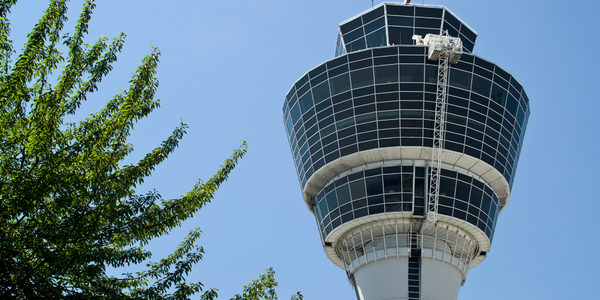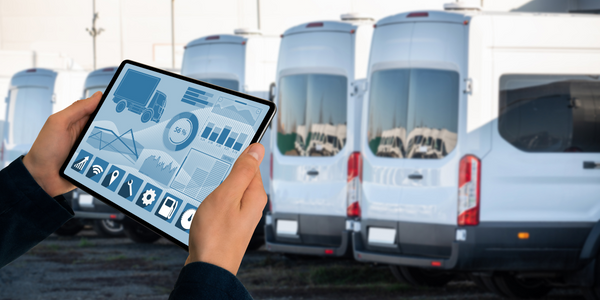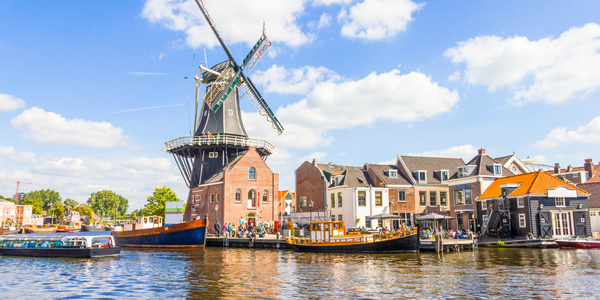Customer Company Size
Large Corporate
Region
- America
Country
- United States
Product
- Azure Synapse Analytics
- Azure Data Lake Storage
- Azure Event Hubs
- Power BI
- Azure Logic Apps
Tech Stack
- Azure Synapse Analytics
- Azure Data Lake Storage
- Azure Event Hubs
- Power BI
- Azure Logic Apps
Implementation Scale
- Enterprise-wide Deployment
Impact Metrics
- Productivity Improvements
- Cost Savings
- Customer Satisfaction
- Digital Expertise
Technology Category
- Analytics & Modeling - Big Data Analytics
- Platform as a Service (PaaS) - Data Management Platforms
- Analytics & Modeling - Predictive Analytics
Applicable Industries
- Cities & Municipalities
- Transportation
Applicable Functions
- Business Operation
- Logistics & Transportation
Use Cases
- Smart City Operations
- Fleet Management
- Traffic Monitoring
- Predictive Maintenance
Services
- Cloud Planning, Design & Implementation Services
- System Integration
About The Customer
The San Francisco Municipal Transportation Agency (SFMTA) is a large government organization responsible for managing all ground transportation in San Francisco, including buses, trains, light rail, cable cars, taxis, and emerging forms of transportation like bikes and scooters. Established by voter mandate in 1999, the agency serves the city's 874,000 residents and 26 million annual visitors, ensuring safe, equitable, and sustainable transportation. The SFMTA operates as a single entity, allowing it to centralize data from various transportation modes, such as bus routes, parking frequency, and pedestrian density. This centralized approach provides the agency with a unique opportunity to leverage data for improving transportation services and optimizing operational efficiency. With a workforce of 1,000 to 9,999 employees, the SFMTA is committed to enhancing the accessibility and quality of transportation services for the people of San Francisco.
The Challenge
The San Francisco Municipal Transportation Agency (SFMTA) faced significant challenges in managing and analyzing the vast amounts of data generated by its operations. The agency's traditional reliance on relational databases and middleware was proving inefficient and resource-intensive. The existing systems required extensive manual processing, such as pulling data from CSV files into Excel for analysis, which was time-consuming and labor-intensive. Additionally, the on-premises infrastructure demanded costly engineering hours for maintenance and upgrades, making it difficult to scale and adapt to the growing data needs. The SFMTA recognized the need for a centralized data management solution that could streamline processes, reduce administrative bottlenecks, and enable data-driven decision-making to improve transportation services and optimize revenue.
The Solution
To address its data management challenges, the SFMTA partnered with Microsoft to implement a serverless data solution centered on Azure Synapse Analytics. This comprehensive cloud solution allowed the agency to unify its disparate data sources into a common data entity, streamlining processes and enabling rapid data analysis. Azure Synapse Analytics was used for data warehousing and orchestration, efficiently handling the massive daily data generated by the Muni railway, taxis, buses, and parking meters. The data was stored in Azure Data Lake Storage and cataloged with Azure Purview Preview. Azure Event Hubs and Azure Logic Apps were employed to build a unified platform for gathering data from various vendors managing parking meters, bus routes, and special events. Power BI was integrated into the Azure Synapse Analytics workspace to create streamlined reporting, facilitating data-driven business decisions. This architecture empowered the SFMTA to focus on data analysis rather than infrastructure management, enhancing its ability to serve the community effectively.
Operational Impact
Quantitative Benefit

Case Study missing?
Start adding your own!
Register with your work email and create a new case study profile for your business.
Related Case Studies.

Case Study
Turning A Stadium Into A Smart Building
Honeywell created what it called the “intelligent system” for the National Stadium in Beijing, China, turning the venue for the opening and closing events at the 2008 Summer Olympics into a “smart building.” Designed by highly controversial artist Ai Weiwei, the “Bird’s Nest” remains one of the most impressive feats of stadium architecture in the world. The 250,000 square meter structure housed more than 100,000 athletes and spectators at a time. To accommodate such capacity, China turned to Honeywell’s EBI Integrated Building Management System to create an integrated “intelligent system” for improved building security, safety and energy efficiency.
.png)
Case Study
Smart Street Light Network (Copenhagen)
Key stakeholders are taking a comprehensive approach to rethinking smart city innovation. City leaders have collaborated through partnerships involving government, research institutions and solution providers. The Copenhagen Solutions Lab is one of the leading organizations at the forefront of this movement. By bringing together manufacturers with municipal buyers, the Copenhagen Solutions Lab has catalyzed the development and deployment of next-generation smart city innovations. Copenhagen is leveraging this unique approach to accelerate the implementation of smart city solutions. One of the primary focus areas is LED street lighting.

Case Study
Airport SCADA Systems Improve Service Levels
Modern airports are one of the busiest environments on Earth and rely on process automation equipment to ensure service operators achieve their KPIs. Increasingly airport SCADA systems are being used to control all aspects of the operation and associated facilities. This is because unplanned system downtime can cost dearly, both in terms of reduced revenues and the associated loss of customer satisfaction due to inevitable travel inconvenience and disruption.

Case Study
IoT-based Fleet Intelligence Innovation
Speed to market is precious for DRVR, a rapidly growing start-up company. With a business model dependent on reliable mobile data, managers were spending their lives trying to negotiate data roaming deals with mobile network operators in different countries. And, even then, service quality was a constant concern.

Case Study
Buoy Status Monitoring with LoRa
The Netherlands are well-known for their inland waterways, canals, sluices and of course port activities. The Dutch Ministry of Infrastructure indicates that there are thousands of buoys and fixed items in and near water environments that would profit from IoT monitoring. One of the problems with buoys for example, is that they get hit by ships and the anchor cable breaks. Without connectivity, it takes quite some time to find out that something has happened with that buoy. Not to mention the costs of renting a boat to go to the buoy to fix it. Another important issue, is that there is no real-time monitoring of the buoys at this moment. Only by physically visiting the object on the water, one gains insight in its status.








